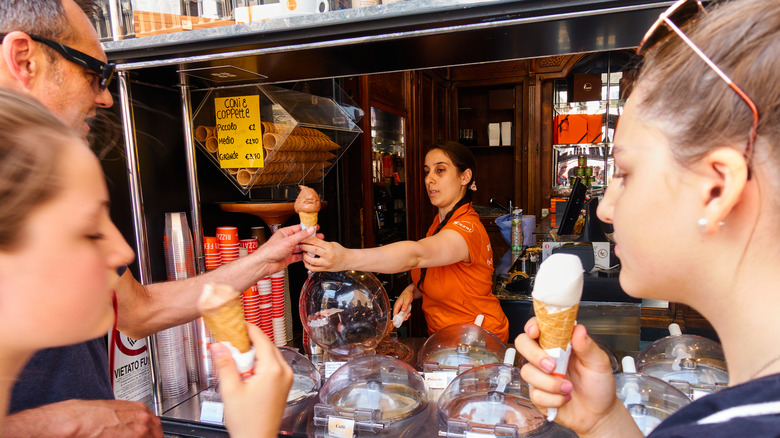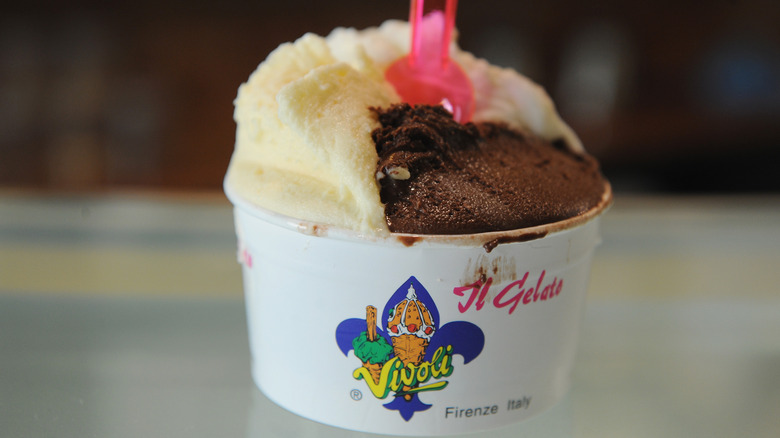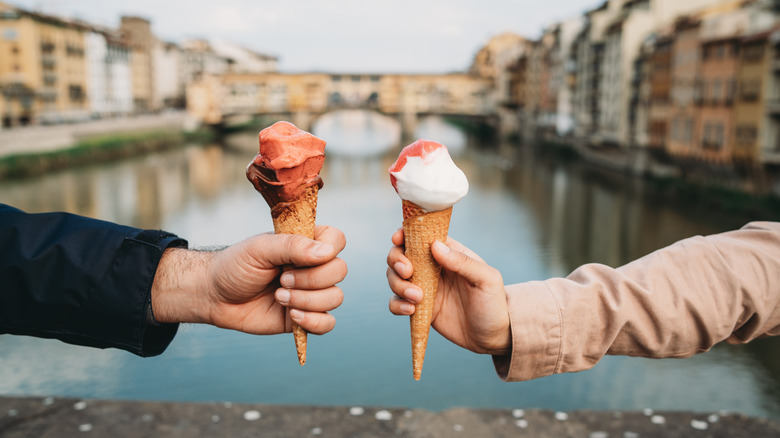Trying to find the best gelato in Italy is like looking for a needle in a haystack among its nearly 40,000 gelaterias. Where does one even start? Thanks to travel expert Rick Steves, he’s already pinpointed the destination — and you need not look any further than Florence to find the very best of this frozen delicacy.
Florence, known as Firenze in Italian, was founded by Julius Caesar over 2,000 years ago as a Roman military colony. By the 16th century, it became a commercial city amid the strategic and undulating Tuscan landscape. This metropolitan dominance brought innovation and some of Italy’s geniuses, including Leonardo da Vinci, Michelangelo, and Galileo Galilei — just a few notable Florentine “locals.”
But a seldom-known spoonful of this city’s history is when, in the 16th century, Cosimo Ruggieri, an alchemist and astrologer, won a competition organized by the Medici family, a renowned noble family, for inventing something that put royal cooks and chefs around Europe to shame thereafter. That Florentine invention was gelato, and the rest is history.
There are many differences between ice cream and gelato. Gelato is a milk-based frozen dessert with a butterfat content of about 4% to 9%, whereas ice cream has about 14% to 25%. While they both contain cream, ice cream is made with a much higher amount (hence the name) and egg yolks. Additionally, gelato is churned slower during production and served at a higher temperature (10 to 22 degrees Fahrenheit versus 6 to 10 degrees for ice cream), allowing for richer flavors and denser texture.
The real scoop on gelato

This popularity of gelato has brought hundreds of flavors to Florentine gelaterias, from classics like fior di latte to more eccentric ones like wasabi. However, one crucial “flavor” that’s never advertised is gelato turistico, or tourist gelato. Rick Steves cautions against this on his blog and reveals some tips to ensure you get the good stuff. The first red flag when identifying tourist gelato is any flavor or color outside its natural one. If it looks artificially colored, it’s also artificially flavored. To find good gelato in Italy, look for advertised words like artigianale (artisanal) or fatto in casa (homemade) that will bring you closer to gelato’s proper form.
Other things to watch out for include flamboyant gelato displays instead of gelato kept in metal tins (bonus authenticity: the tins are covered with a lid). True gelato is always stored at the right temperature, so if you see a mound of shiny gelato that shows no signs of melting, something is probably wrong and screaming emulsifiers, excessive sugar, and vegetable fats. No, grazie!
Lastly, any gelateria with flashy exteriors, stocks of commercially branded flavors, expensive prices, and suspiciously generous servings is not serving you the real-deal scoop. That said, Chiara (a guidebook researcher and tour guide for Rick Steves) shared her greatest piece of advice on the blog: it always comes down to taste. An authentic gelateria will always let you try a sample, recommend perfect gelato pairings, and frown if you ask for flavors that don’t go well together.
Florence’s best gelato

So whereabouts in Florence is the best scoop? Start your hunt at the city’s oldest gelateria, Vivoli. Homemade gelato has been dished out at this iconic joint since 1929, inside the historic center of Florence. Many readers of Rick Steves’ blog swear by Vivoli as the best, most authentic, crowd-pleasing gelateria.
A nod to the Medicis and gelato’s history is Gelateria De’ Medici, an old-school-style parlor that offers 44 flavors made with traditional recipes and quality ingredients — homemade gelato cakes are also on the table. They have two locations with glamorous dark wood interiors, one in Statuto and another in Piazza Beccaria.
La Sorbettiera, a husband-and-wife gelateria since 2007, has won awards for its unique flavors, such as “New England 1776” (fior di latte, maple syrup, and candy bacon). You also have Perchè No, meaning “Why not?” You’ll know you’ve arrived when you see the cursive neon-lit sign. Finally, another Rick Steves favorite is Festival de Gelato, right by Florence’s Duomo. You might have a hard time choosing from more than 60 flavors!
Truth be told, there are many worthwhile, family-run, artisanal gelaterias worth your time in Florence — “why not” try them all? Maybe the country’s cultural greats lived in Florence for a couple reasons … to finish their noble work and enjoy the best gelato in all of Italy.

